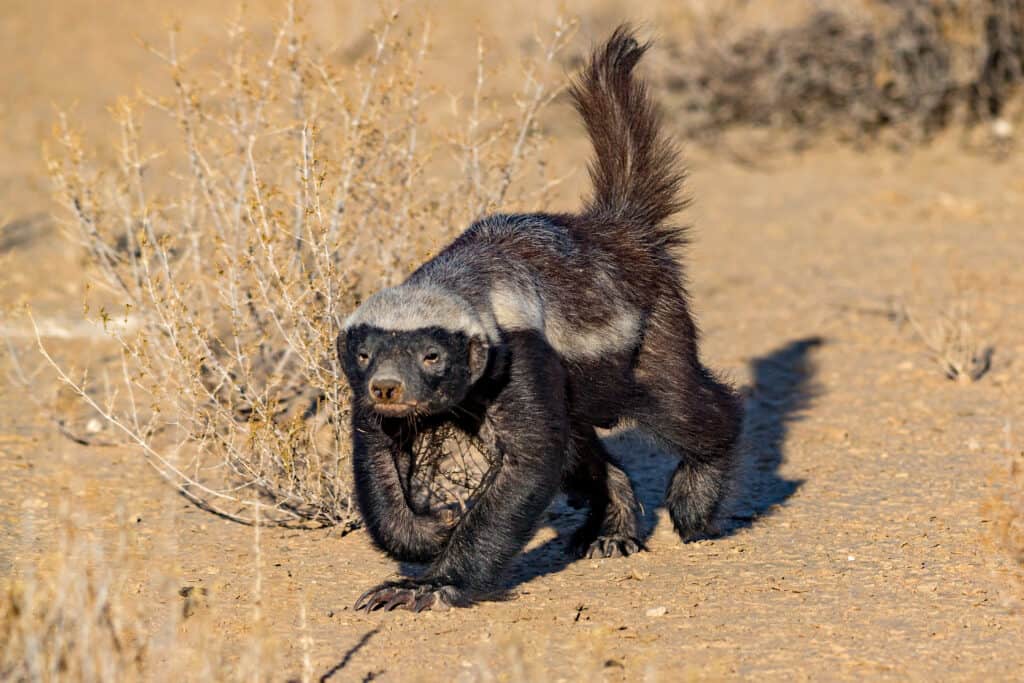Sometimes, looks can be deceiving. This was the case for a hungry leopard roaming the Sabi Sands Game Reserve in Kruger National Park, South Africa. Having its prey (a baby honey badger) pinned to the ground, this apex predator thought it secured an easy meal. However, it soon learned that honey badgers are much scrappier than they appear — especially when it’s a brave mom rushing in to rescue her baby.
In this clip, we see a baby honey badger fighting for its life against an overpowering leopard. In the nick of time, the leopard had the surprise of its life when the baby’s mother rushed in and launched a heroic attack. Let’s take a closer look at what unfolded in this clip.
Check Out the Spectacular Footage Below!
Is It Common to See Leopards Attacking Honey Badgers?

Leopards sit at the top of the food chain in their ecosystem.
©wasantha8958/Shutterstock.com
Not only is it common to see leopards attack honey badgers, but it is also one of the chief predators that honey badgers encounter in the wild. Other animals that go after honey badgers are crocodiles, spotted hyenas, and pythons. Honey badgers typically weigh between 11 to 35 pounds, so big cats like leopards — who weigh up to 165 pounds and are expert hunters — pose serious harm to these tiny mammals. However, honey badgers are daring and incredibly tough, widely known as “the most fearless animal on Earth.”
What Makes Honey Badgers So Tough?

The honey badger is known by many as “the most fearless animal on Earth.”
©Braam Collins/Shutterstock.com
Honey badgers (Mellivora capensis) are ruthlessly tough. They have steel-like skin that is difficult for animals — and humans — to pierce. They are often associated with skunks, as they have a white stripe along their back from head to tail. The difference is that honey badgers are significantly bigger. That isn’t where the similarities end, though. Honey badgers, like skunks, have a stinky defense against predators. While both animals have a gland in their tail that houses a foul-smelling liquid to ward off predators, the honey badger deploys its weapon a bit differently. If a honey badger feels threatened, it may resort to releasing a potent chemical odor, which is commonly known as a “stink bomb.” Fortunately for the leopard in the video above, it got the hint and retreated before the honey badger had to resort to such measures.
The photo featured at the top of this post is © Pavel Kovaricek/Shutterstock.com
Thank you for reading! Have some feedback for us? Contact the AZ Animals editorial team.






